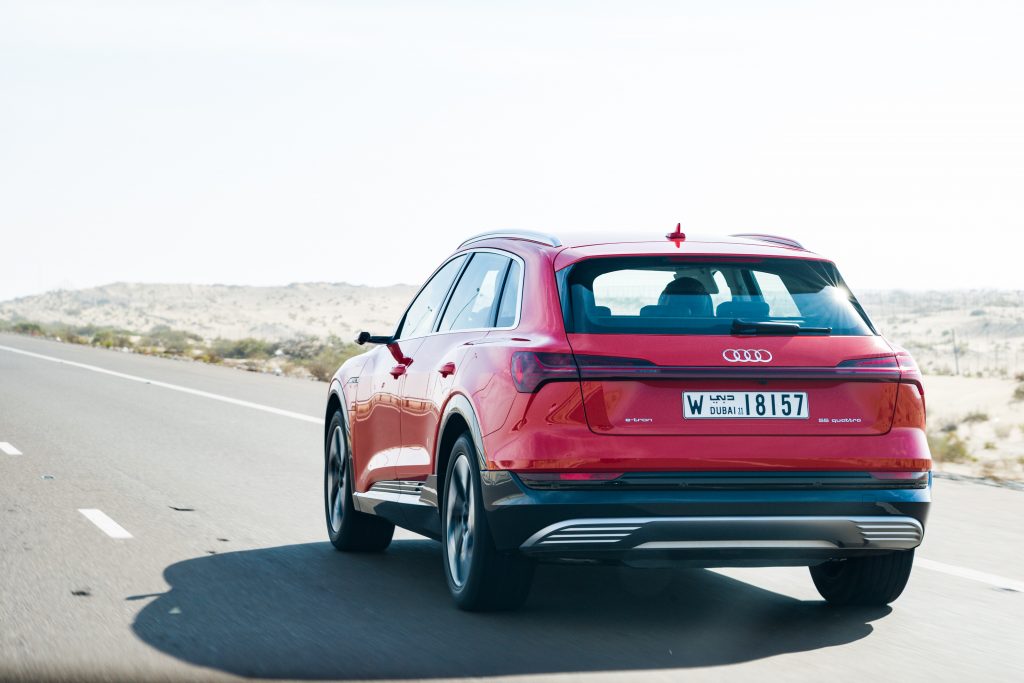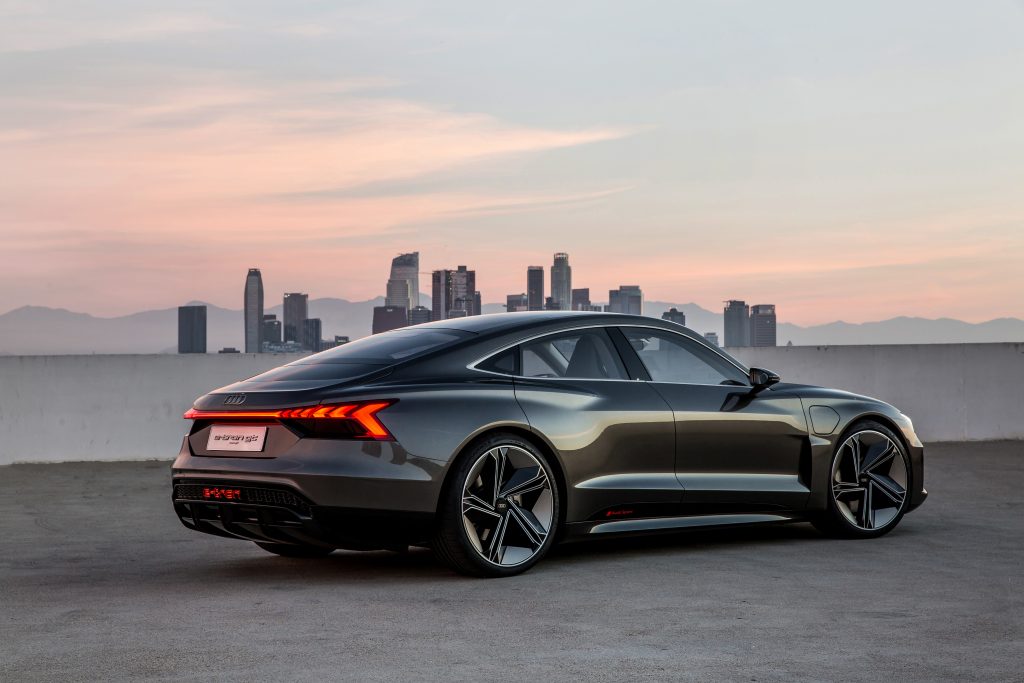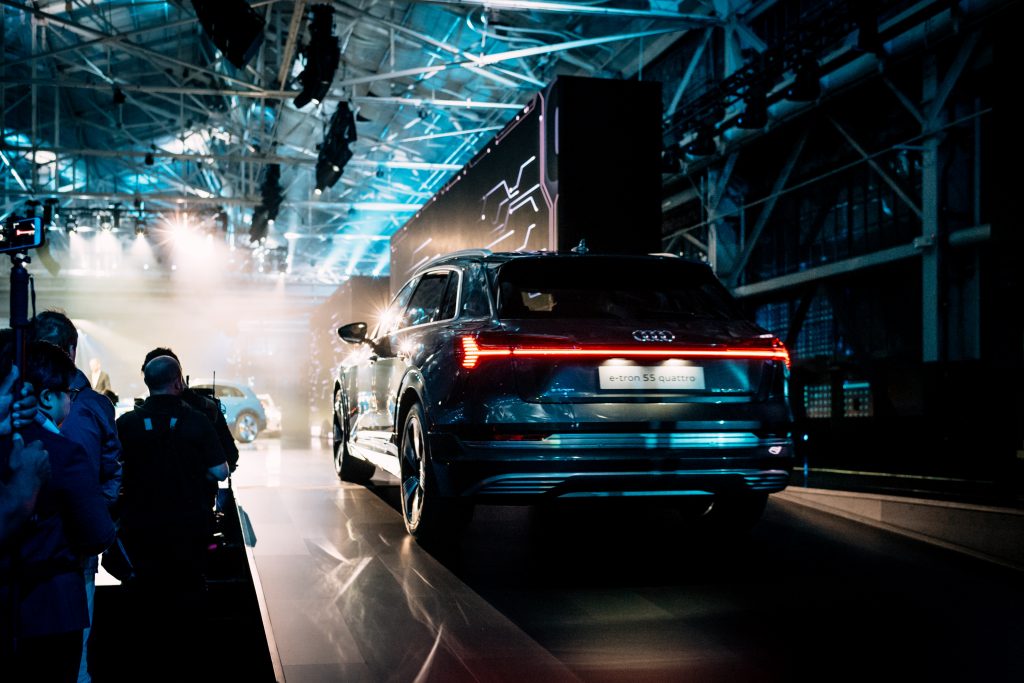Test Drive: 2019 Audi e-tron
Why it matters that their first production electric vehicle looks and feels like the car you’re used to driving

The idea that the near-future will be radically different from the present might be false. Yes, we’ll see progress and innovation, however broad acceptance of new technologies only really occurs when they’re delivered in a familiar format, and only when these semi-cloaked new technologies are widely distributed is there the true opportunity for paradigm change. Whether it was the first TV programs offering the ability to see a radio show or the skeuomorphic affordance designed into the original iPhone interface, this transitional concept has proven again and again to open the door to bigger change. This is all to say that the Audi e-tron’s semi-cloaked new technologies promise to bring electrified mobility to the masses not by following the early trends in electric vehicle design, but by making the driving experience as familiar as possible.

On this week’s test drive of the e-tron in Abu Dhabi, my first impression was, in fact, that it feels like a regular Audi. Later I learned, when sharing this comment with one of the engineers who helped develop the car, that it’s a compliment. Their strategy at the outset of developing this car was not to make drivers learn how to drive an electric vehicle (EV), but to develop an EV that is optimized for the style and perception of driving that customers already have. This plays through from a design perspective as well—the e-tron has several visual cues that differentiate it from Audi’s other SUVs, but it’s still very much in the Q family.

The most obvious difference in driving feel between any EV and any internal combustion engine-powered one is in the acceleration. Electric motors have massively more available force from a stand-still, so punching it on a highway on-ramp or launching when the light turns green can be thrilling. The e-tron meets the mark with its 5.7 second 0-60mph performance.

The second most obvious characteristic of EVs released to date is braking. Owners of any brand’s electric vehicle have been trained to use the brake pedal less; instead letting the magnetic friction of the electric motor slow the car which, in turn, generates energy that’s channeled back to the battery to be stored for later use. Regenerative braking (or “regen,” as it’s called) is the cornerstone of extending an EV’s range. And the awkward notion of only driving by pressing the “gas” pedal to accelerate and slowly lifting off it to brake has come to define EV driving style. Audi doesn’t want their first-time EV owners to re-learn how to drive and instead developed an industry-first braking system that delivers battery-regeneration while using a brake pedal that has the same familiar feel drivers of traditional cars are used to.

Now it’s worth nerding out on this for a minute. Audi’s new braking system is a complexity of electric and hydraulic mechanisms. There’s a hydraulic piston under the pedal to control the feel of pressing the brake, but the actual pedal movement just delivers data to the electrohydraulically integrated brake control system which then determines whether to use the electric motor, wheel brake or a combination of the two. For braking up to 0.3g of force (which is the case 90% of the time), all speed reduction is handled by the electric motors. If the wheels’ brakes are needed, they kick in seamlessly and automatically—the driver does not know or sense which is being used to stop the car. As a result of this system, Audi attributes up to 30% of the vehicle’s range to this regen solution. The point here is to use the brakes as you would normally to maximize energy recuperation—the opposite of all other EVs.

The brakes on the e-tron aren’t the vehicle’s only industry-first. In lieu of side mirrors, non-US customers have the option to upgrade to a side camera virtual mirror system. With a more slender form, there’s a significant reduction in wind noise and, given how quiet EVs are, this makes a huge difference at high speeds. After about five hours of test driving, however, I still found it difficult to get used to looking at screens in the door panel instead of out the side window. Presumably after a few days of regular usage it would feel more natural.

A note on the quietness of EVs: while the near-silence of an electric motor compared to an internal combustion one is delightful on those days when you just want some peace, there’s a lot of value in an audible reference for acceleration and driving dynamic. I drove a prototype A1 e-tron six years ago and it had a menu of “soundtracks” that correlated the tone and intensity of a gas engine, but with alternative noises. My favorite made the car sound like a Star Trek shuttle craft—a transformative, fantastic and future-forward feeling. When delivered to North America in mid-2019, the e-tron will emit a “technically futuristic” sound at speeds under 20mph—per government legislation. I didn’t get to hear this sound on the test drive as they were European spec vehicles, but I’m hoping the evoke a similar sci-fi feel.

The e-tron is powered by front and rear electric motors, offers roughly 250 miles in range and tops out at an electronically limited 124mph. As it’s an SUV it’s off-road capable and it passed the test on a light terrain course we visited in the desert. Partnerships with Amazon for home charger installation and Electrify America for charging on-the-go promise fast and accessible top-ups.

The Audi e-tron is being built in the CO2-neutral plant in Brussels and will be delivering to European customers in early 2019 and North American ones by the middle of the year. Pricing starts at $74,800.












